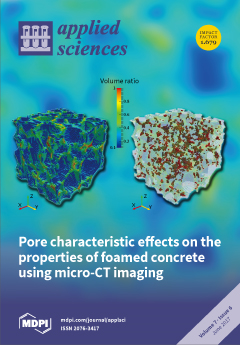1
Elettra-Sincrotrone Trieste S.C.p.A., Strada Statale 14–km 163.5 in Area Science Park, 34149 Basovizza, Trieste, Italy
2
CNR-ISM, Area Science Park, 34149 Basovizza, Trieste, Italy
3
Institute of Multidisciplinary Research for Advanced Materials, Tohoku University, Sendai 980-8577, Japan
4
Department of Physics, Graduate School of Science, Kyoto University, Kyoto 606-8502, Japan
5
Department of Physics, Lund University, P.O. Box 118, 22100 Lund, Sweden
6
CIMAINA and Dipartimento di Fisica, Università degli Studi di Milano, Via Celoria 16, 20133 Milano, Italy
7
CNR-IFN, Piazza Leonardo da Vinci 32, 20133 Milano, Italy
8
Physikalisches Institut, Albert-Ludwigs-Universität, 79104 Freiburg, Germany
9
Center for Free-Electron Laser Science, DESY, Notkestrasse 85, 22607 Hamburg, Germany
10
CNR-IOM, Area Science Park, 34149 Basovizza, Trieste, Italy
11
Max-Born-Institut, Max-Born-Strasse 2 A, 12489 Berlin, Germany
12
Department of Physics, University of Connecticut, 2152 Hillside Road, Storrs, CT 06269, USA
†
These authors contributed equally to this work.
‡
Current address: RIKEN SPring-8 Center, Kouto, Sayo, Hyogo 679-5148, Japan.
§
Current address: Argonne National Laboratory, 9700 S. Cass Avenue, Argonne, IL 60439, USA.
‖
Current address: Femto Easy, Parc scientifique Laseris 1, 33114 Le Barp, France.
¶
Current address: Particle Accelerator Physics Laboratory, École Polytechnique Fédérale de Lausanne EPFL, CH-1015 Lausanne, Switzerland.
add
Show full affiliation list
remove
Hide full affiliation list
Abstract
Pump-probe experiments are commonly used at Free Electron Lasers (FEL) to elucidate the femtosecond dynamics of atoms, molecules, clusters, liquids and solids. Maximizing the signal-to-noise ratio of the measurements is often a primary need of the experiment, and the aggregation of repeated, rapid,
[...] Read more.
Pump-probe experiments are commonly used at Free Electron Lasers (FEL) to elucidate the femtosecond dynamics of atoms, molecules, clusters, liquids and solids. Maximizing the signal-to-noise ratio of the measurements is often a primary need of the experiment, and the aggregation of repeated, rapid, scans of the pump-probe delay is preferable to a single long-lasting scan. The limited availability of beamtime makes it impractical to repeat measurements indiscriminately, and the large, rapid flow of single-shot data that need to be processed and aggregated into a dataset, makes it difficult to assess the quality of a measurement in real time. In post-analysis it is then necessary to devise unbiased criteria to select or reject datasets, and to assign the weight with which they enter the analysis. One such case was the measurement of the lifetime of Intermolecular Coulombic Decay in the weakly-bound neon dimer. We report on the method we used to accomplish this goal for the pump-probe delay scans that constitute the core of the measurement; namely we report on the use of simple auto- and cross-correlation techniques based on the general concept of “matched filter”. We are able to unambiguously assess the signal-to-noise ratio (
SNR) of each scan, which then becomes the weight with which a scan enters the average of multiple scans. We also observe a clear gap in the values of
SNR, and we discard all the scans below a
SNR of 0.45. We are able to generate an average delay scan profile, suitable for further analysis: in our previous work we used it for comparison with theory. Here we argue that the method is sufficiently simple and devoid of human action to be applicable not only in post-analysis, but also for the real-time assessment of the quality of a dataset.
Full article





